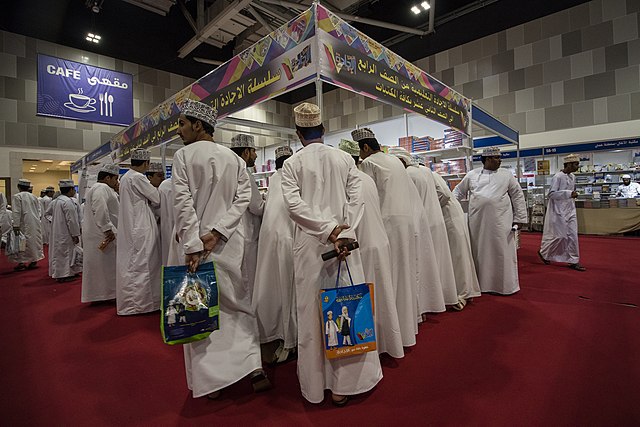Thawb or thobe is an Arab dress for the inhabitants of the Arabian Peninsula, also called dishdashah, and kandurah, kandoora or gandurah in varieties of Arabic. A long-sleeved ankle-length traditional robe, it is mainly worn by men in the Arabian Peninsula, Jordan, Syria, Palestine, Lebanon, North Africa, and some countries in East and West Africa, with regional variations in name and style. It is also worn by Muslim men in the Indian subcontinent due to its modest appearance, and is referred to as jubbah. Depending on local traditions, a thawb can be worn in formal or informal settings; in the Gulf states thobes are the main formal attire for men. The term "thobe" is also used in some varieties of Arabic to refer to women's attire, such as in Palestine and Sudan.
Gulf Arabs wearing thawbs in Oman.
Omani men wearing thawbs at the Muscat International Book Fair.
Iraqi men wearing the dishdasha.
Sudanese woman wearing a traditional thawb
The jellabiya, also jalabiya, galabeya or jalamia is a loose-fitting, traditional garment from the Nile Valley. Today, it is associated with farmers living in Egypt and comes in rich color varieties. The garment is also worn in Sudan, but has other textures and is usually white, as well as some communities from Eritrea and Ethiopia. The colorful Egyptian style is used by both men and women.
Musicians in Egypt wearing jellabiya
Beja boy in east Sudan wearing jellabiya
Egyptian boy in striped galabeya







